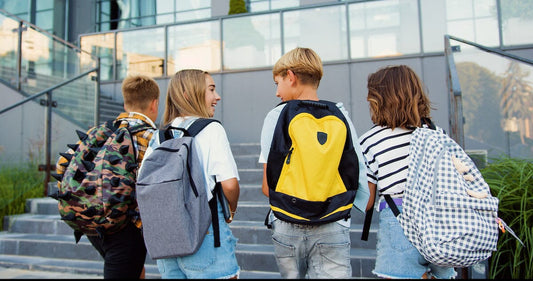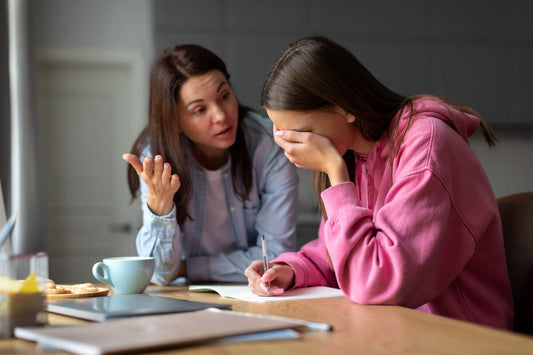While fleeting anxiety can be a normal part of life, for some kids it can be so intense as to interfere with their happiness and productivity. Sometimes this anxiety comes in the form of situational anxiety, provoked by specific situations. The anxiety passes only when they are away from these triggers. Whether it’s a doctor’s office that provokes excessive fear or an upcoming test, situational anxiety can be scary for the child experiencing it, and for a parent unsure how to help. If you suspect that your child may be suffering from situational anxiety, read on for signs to look out for and ways you can help.
How Does Situational Anxiety Affect Children?
Children who suffer from situational anxiety will respond with heightened fear to a specific situation, event or experience. Often this anxiety is accompanied by a range of physical symptoms, such as trembling, dizziness, racing heart, headaches or sweating. While worry can be a normal part of a child’s development, if the child or teen continues to react negatively to the same trigger despite the best efforts to help them, they may be suffering from situational anxiety. Here are some scenarios that may cause a child or teen to experience situational anxiety and some tips on how you can help.
The Doctor’s Office
Half of 2- to 5-year-olds are afraid of going to the doctor, according to a new survey of 726 parents. Sometimes this fear can last beyond age 5 and become so intense that a child can have an anxiety or panic attack every time they enter or even come near the office.
Tip: Validate your child’s feelings before and during the doctor’s visit. Offer empathy by acknowledging how they feel. Let them know that even you sometimes get nervous when you go to the doctor, but you’re always glad you went because you like to be healthy. It’s also wise to prepare them for the upcoming visit by letting them know exactly what to expect, even when it may include a vaccination. Try practicing some mindfulness techniques like slow breathing, relaxing yoga postures or a silent meditation before going into the office.
New City or New School
New situations can be tough on any child, but a new city or new school may bring on feelings of anxiety. Suddenly, everything in their world is unfamiliar and they are faced with new surroundings, new teachers and the prospect of making new friends. The anxiety can even disrupt their sleep.
Tip: If you’re anticipating a new move, try to help your child re-establish routine and stability as quickly as possible. If you used to order pizza from Tony’s Pizzeria downtown every Friday, find a place like Tony’s stat and keep your Friday pizza party going.
If your child used to have a play date with their BFF every two weeks, encourage a Skype date every two weeks instead, while encouraging them to sign up for group activities to establish new friendships. Children thrive on routines and helping to adapt their old routine to a new place is a great start in helping them feel at home.
Public Speaking and Tests
Children and teens may become extremely anxious at the thought of public speaking or having to take an important test. Along with the fear of criticism that comes with stumbling (physically or verbally) in front of a crowd, they make feel bogged down by the pressure to perform well academically, especially if they struggle with perfectionism.
Tip: Walk your child through a “pre-performance routine” to help them feel as prepared as possible for the speech or test. In addition to rehearsing the actual speech or running through possible test questions, get your child in the habit of practicing positive affirmations like, “I am confident,” or “I am prepared.” Also, remind them of times when they succeeded at public speaking in the past or aced tests, so they can recall these moments of glory when under pressure.
Fears and Phobias
A child may develop a fear or phobia surrounding a specific situation or trigger such as flying, heights, spiders, etc. While fears and phobias are common and many children grow out of them, the experience itself can be scary while it lasts.
Tip: Try bringing your child’s attention to the changes that happen in his body and behavior when faced with the fear or phobia, such as sweaty palms or shaking. Resist disciplining or shaming him. Ask if he notices these physical changes, to help him become aware of his body’s response to stress. Then model techniques such as slow breathing or redirecting attention to the senses.
Ongoing Support
Teaching your child mindfulness techniques such as slow breathing and promoting healthy habits in sleep and nutrition can better prepare her for future anxiety-provoking situations. You may also want to consider Brillia, a homeopathic tablet that neutralizes the S-100 protein associated with anxiety. The tablet can be a helpful addition to these tips when dealing with situational anxiety without harmful side effects. The more tools your child has under her belt, the more empowered she will feel on even the most challenging days.
Erica Garza is an author and essayist from Los Angeles. She holds an MFA from Columbia University and a certificate in Narrative Therapy. Her writing has appeared in TIME, Health, Glamour, Good Housekeeping, Women's Health, and VICE.


 Improve focus and clarity.
Improve focus and clarity.


